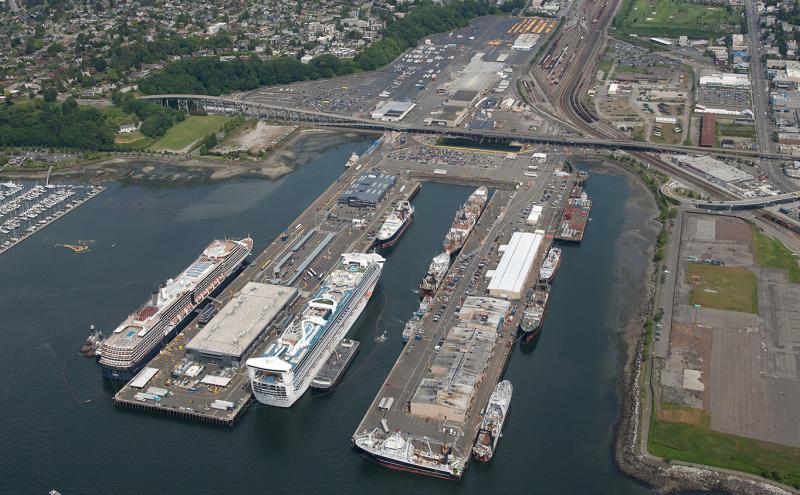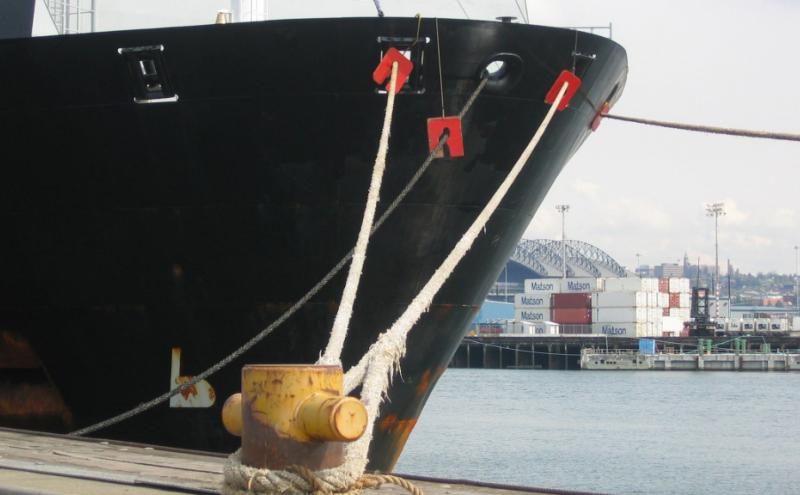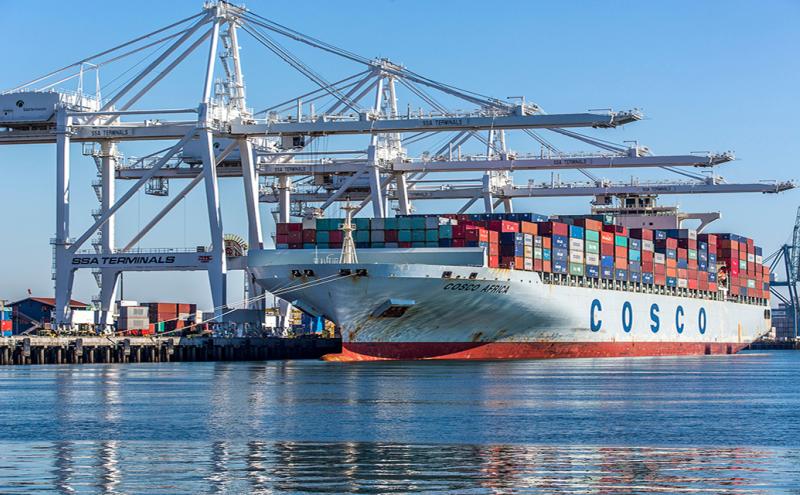
In Puget Sound, big ships coming and going are a daily part of marine traffic. But how much do you really know about the marine cargo that keeps the economy of our region afloat?
The Northwest Seaport Alliance is a joint marine cargo operating partnership between the Port of Tacoma and the Port of Seattle — the first of its kind in North America. This innovative model has proven to be an economic and operational success, making the combined north-south harbors the seventh-largest container gateway in the United States, with:
- Annual container volume of 3.7 million twenty-foot equivalent units (TEUs) carrying 26.1 million metric tons of containerized cargo
- A majority of this cargo being international, though 700,000 TEUs were shipped to and from Alaska, Hawaii, and other domestic locations
- Seventeen international container carriers providing regular weekly service to key markets in Asia, Europe, Central and South America, and Oceania
- Eighteen regularly scheduled liner services to connect cargo to 63 direct international ports of call
- An economic impact to the region (both indirect and induced) of a total of 45,500 jobs, $3.2 billion in labor income, and $9.7 billion in business output in 2017. Learn more
Considering the impact of maritime cargo impact on the region, here are a few fast facts that you probably did not know about. But maybe you should.
1. What is a TEU?
The TEU stands for twenty-foot equivalent unit, a standard that can be used to measure a ship’s cargo capacity. One TEU is 20 feet long and 8 feet tall.
Ports and ships around the world are measured by their TEU volume, a metric that is used around the world. An 18,000-TEU ship can carry 23 rows of containers and (depending upon the cargo), could draw up to 52 feet. As you will learn below, ships are getting larger and The Northwest Seaport Alliance is well-equipped to handle them.
The largest port in the world, Shanghai, China, handles about 30 million TEUs annually.
A little closer to home, here are the top Ports in the U.S. by their 2017 annual container volume:
| 1. Los Angeles /Long Beach | 16 million TEUs |
| 2. New York/New Jersey | 3.2 million TEUs |
| 3. Savannah, Georgia | 4.1 million TEUs |
| 4. The NWSA (Seattle and Tacoma) | 3.7 million TEUs |
2. What are the NWSA’s top maritime cargo exports ?
By value
- Oil seeds and grains — $3 billion
- Industrial machinery and computers — $1.5 billion
- Prepared vegetables, fruits, and nuts — $1.1 billion
- Fish and Seafood — $851.5 million
- Cereals — $821.8 million
Source: Northwest Seaport Alliance 2017 Annual Report
By Volume
- Hay — Eastern Washington grows the highest quality hay in the world
- Oil seeds —like rapeseed (used for canola oil), soybean, or cotton. And did you know the Pacific Northwest is a major exporter of soybeans?
- Wood pulp
3. How deep is the harbor in Seattle?
Seattle’s Elliott Bay is a naturally deep harbor that is 600 feet deep and does not require regular maintenance dredging (like many other ports).
That means that if the Space Needle sat on the bottom of the harbor, the tip would be barely poking out of the water.
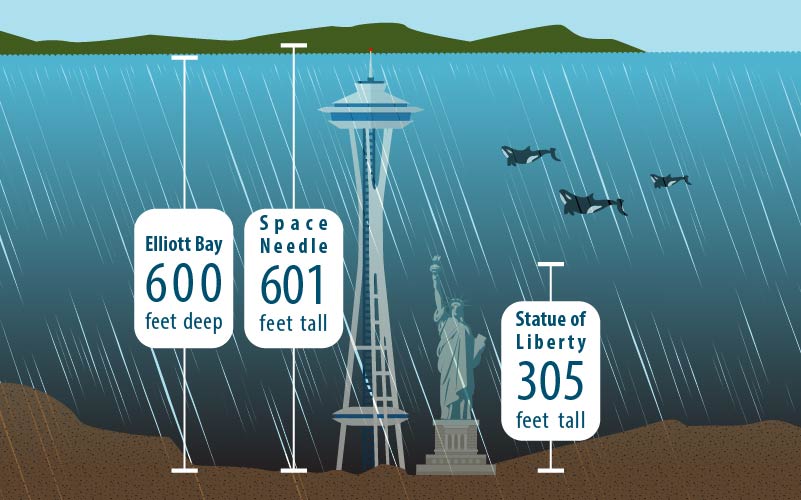
4. How much grain is exported from Seattle?
The Terminal 86 grain facility in Seattle exports about 5 million metric tons of grain a year.
But what exactly does that mean? Let’s do the math using the following illustration that may help put it in perspective:
- Imagine all of the grain exported were corn meal (disclaimer: the grain terminal does not export corn meal, but does export corn, soybeans, and sorghum)
- One Hostess Twinkie is made from 2 ounces of corn meal
- One Twinkie is about 4 inches long
- The circumference of the Earth is 24,901 miles around
Therefore, 5 million metric tons would make enough Twinkies to circle the Earth about 224 times.
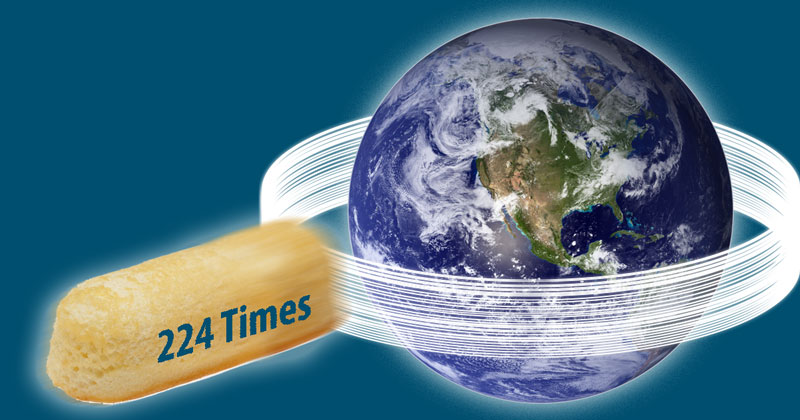
5. What is the largest ship to come to the region?
The Northwest Seaport Alliance facilities can handle some of the biggest ships in the world — like the CMA CGM Benjamin Franklin, the largest cargo vessel to visit the United States that arrived Feb. 29, 2016, at the North Harbor's Terminal 18.
- Length: 1,310 feet long — longer than the height of two Space Needles
- Width: 177 feet — wider than the base of the Louvre Pyramid
- Container capacity: 18,000 TEUs laid end-to-end, would stretch from Tacoma to Everett (68 miles) and is more than double the cargo of most container ships calling the NWSA terminals
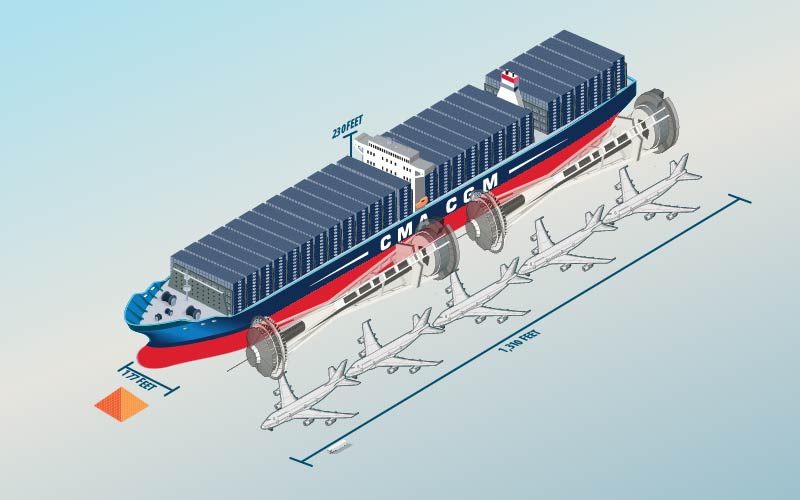
Learn more about The Northwest Seaport Alliance’s recent Economic Impact Report and the Port’s 2019-2023 Maritime Budget Blueprint that includes the most significant investments in maritime infrastructure in a generation.

